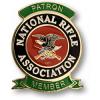Be safe out there, folks. I copied and pasted below Bill Wiese’s entire post from this Calguns.net thread:
|
I need a LIFE!!
|
Gun: Ruger Stainless Bisley Blackhawk 44Mag single action, 5.5″ bbl.
Ammo: Miwall 44Mag TMJ (new loads, not reloads)
The only time I’ve had a no-fire (hangfire?) in ages has been in autoloaders – where there a click and no action cycling, and a ‘second strike’ was used to fire it, no muss/no fuss.
This time, I was firing a fairly rapid progression in a revolver, down to last 3 rounds. Then there was a ‘click’ – then “Boom” and “Boom” – I didn’t stop. (I would have if there were a squib load; been thru that w/reloads.)
I then spun the cylinder around to the nonfired position. As I was moving to aim position and almost beginning to cock, the gun fired on its own (no trigger pull, and the gun wasn’t even cocked) – a true “hangfire”, it was ‘cooking’ in the cartridge for a bit of time before detonation.
- Approx. 10-15 sec elapsed between initial ‘click’ vs. discharge
. - Discharge felt a *tad* light but in no way a squib load (verified clear barrel from rear
after discharge!)
.
- If I had NOT rotated the cylinder back to the nonfired position, the discharge WOULD
have damaged the gun – and likely my hands to some extent – depending on cylinder
position.
.
- If I WERE rotating cylinder back to the problem nonfiring position and the hangfire
discharge occured before getting back to that position, then my left hand could have
really been torn up. [Fortunately there may have been mitigating factors – Bisley
Blackhawk is a big strong gun – and these loads were not the hottest.]
HOW TO PROPERLY DEAL WITH SUCH PROBLEMS:
- ALWAYS need to wait 30 or more seconds if there’s a “click”/ hangfire before taking any
measures to cycle/eject/remove/round.
.
- On revolver…
- STOP FIRING and leave ‘dead’ round chambered in firing position.
. - KEEP HAND AWAY FROM THE CYLINDER and of course the BARREL/CYLIDNER
GAP AND FRONT OF CYLINDER areas. (Duh, but just in case.).
. - KEEP GUN POINTED IN SAFE DIRECTION. Do NOT do anything to rotate cylinder
nor try to eject problem hangfire round until at least 30 seconds (if not more).
.
- STOP FIRING and leave ‘dead’ round chambered in firing position.
- On an autoloader pistol…
- a non-fire involves no action cycling, so a ‘second strike’ is possible
and may well work. – esp. if a full double-action pistol.
.
- Single-action pistols require recocking of an an exposed hammer – so there
is small risk of a hangfire discharge kicking the slide back into your thumb
while you’re trying to (re)cock the hammer. At worst you might get a minor
cut from this.
.
- Hammmerless striker-fired pistols generally do not have any ‘second strike’
opportunity without hand-racking the slide: this should not be done, as the
problem round could discharge while the slide is being racked, with breech
unlocked… leading to “Ka-Boom” issues and certainly damage to gun.
- a non-fire involves no action cycling, so a ‘second strike’ is possible
What I did right: kept gun in hand, pointed in safe direction!
While this involved a revolver and I’ve generalized to pistols, you should also keep this in mind on rifles too – esp since a rifle cartridge is generally is of higher energy than revolver ammo!
San Jose, CA

No postings of mine here, unless otherwise specifically noted, are
to be construed as formal or informal positions of the Calguns.Net
ownership, The Calguns Foundation, Inc. (“CGF”), the NRA, or my
employer. No posts of mine on Calguns are to be construed as
legal advice, which can only be given by a lawyer.

I never thought of a hangfire occurring in my Glock, thanks for making me think about it.
I’ve had plenty of dud rounds in 22LR that usually get ejected within seconds of not firing. I should not do that either, now that I think about it.